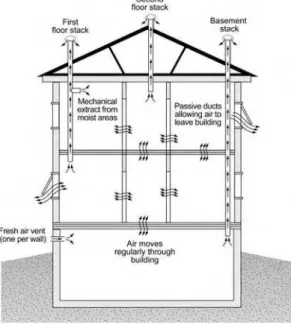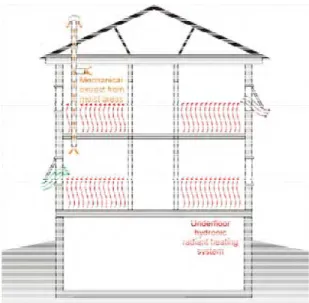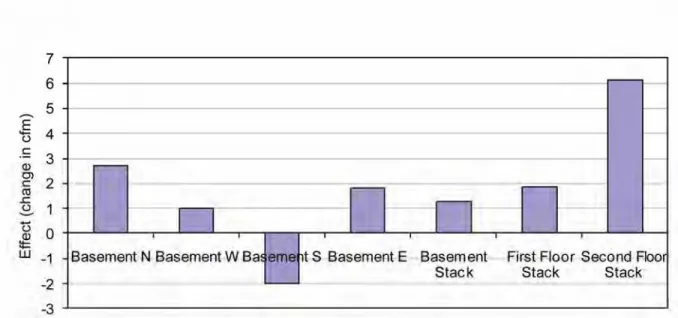Publisher’s version / Version de l'éditeur:
Solplan Review, 152, pp. 18-19, 2010-06-01
READ THESE TERMS AND CONDITIONS CAREFULLY BEFORE USING THIS WEBSITE.
https://nrc-publications.canada.ca/eng/copyright
Vous avez des questions? Nous pouvons vous aider. Pour communiquer directement avec un auteur, consultez la
première page de la revue dans laquelle son article a été publié afin de trouver ses coordonnées. Si vous n’arrivez pas à les repérer, communiquez avec nous à PublicationsArchive-ArchivesPublications@nrc-cnrc.gc.ca.
Questions? Contact the NRC Publications Archive team at
PublicationsArchive-ArchivesPublications@nrc-cnrc.gc.ca. If you wish to email the authors directly, please see the first page of the publication for their contact information.
NRC Publications Archive
Archives des publications du CNRC
This publication could be one of several versions: author’s original, accepted manuscript or the publisher’s version. / La version de cette publication peut être l’une des suivantes : la version prépublication de l’auteur, la version acceptée du manuscrit ou la version de l’éditeur.
Access and use of this website and the material on it are subject to the Terms and Conditions set forth at
Use of vents and stacks for natural ventilation Macdonald, I. A.; Ouazia, B.; Zhou, L.
https://publications-cnrc.canada.ca/fra/droits
L’accès à ce site Web et l’utilisation de son contenu sont assujettis aux conditions présentées dans le site LISEZ CES CONDITIONS ATTENTIVEMENT AVANT D’UTILISER CE SITE WEB.
NRC Publications Record / Notice d'Archives des publications de CNRC:
https://nrc-publications.canada.ca/eng/view/object/?id=1733520d-9741-4863-ab70-051a0d013cb3 https://publications-cnrc.canada.ca/fra/voir/objet/?id=1733520d-9741-4863-ab70-051a0d013cb3
http://www.nrc-cnrc.gc.ca/irc
U se of ve nt s a nd st a c k s for na t ura l ve nt ila t ion
N R C C - 5 3 5 3 0
M a c d o n a l d , I . A . ; O u a z i a , B . ; Z h o u , L .
J u n e 2 0 1 0
A version of this document is published in / Une version de ce document se trouve dans:
Solplan Review, (152), pp. 18-19, June 01, 2010
The material in this document is covered by the provisions of the Copyright Act, by Canadian laws, policies, regulations and international agreements. Such provisions serve to identify the information source and, in specific instances, to prohibit reproduction of materials without written permission. For more information visit http://laws.justice.gc.ca/en/showtdm/cs/C-42
Les renseignements dans ce document sont protégés par la Loi sur le droit d'auteur, par les lois, les politiques et les règlements du Canada et des accords internationaux. Ces dispositions permettent d'identifier la source de l'information et, dans certains cas, d'interdire la copie de documents sans permission écrite. Pour obtenir de plus amples renseignements : http://lois.justice.gc.ca/fr/showtdm/cs/C-42
Use of Vents and Stacks for Natural Ventilation*
by Iain Macdonald, Boualem Ouazia and Liang (Grace) Zhou
The NRC Institute for Research in Construction has been investigating the use of hybrid
ventilation systems for single-family residential buildings in terms of their potential for meeting code requirements, indoor air quality standards, and expectations for occupant satisfaction and energy efficiency. Hybrid ventilation combines both mechanical and natural ventilation.
The research is important because ventilation and air-conditioning can account for up to 50% of residential energy consumption, while having a direct impact on occupant health and comfort. Natural ventilation may result in too little or too much fresh air exchange, and may waste energy in heating or cooling a space. Mechanical ventilation is easily controlled and enables heat
recovery and filtration but it consumes electrical energy and thereby promotes greenhouse gas emissions. Hybrid ventilation, combining the advantages of both natural and mechanical ventilation, may offer a way to reduce the energy used for building ventilation.
The NRC-IRC research is seeking to develop innovative hybrid ventilation strategies that will be suitable for houses, with or without good indoor air distribution provided by the (forced-air) heating system. The experiments will assess several hybrid strategies in terms of ventilation rates and distribution, energy consumption and thermal comfort, for a full range of weather conditions. An important step in the process has been to understand the function and effectiveness of
ventilation stacks and other passive ventilation devices ( commonly used in Japan and Scandinavia).
Experiments
The experiments were conducted in the two-storey NRC-IRC Ventilation and Wall Research House facility in Ottawa. The house is fitted with three stacks (flues) and four basement vents equipped with motorized dampers (Figure 1) that permit the testing of several venting
configurations.
For the experiments, the forced-air delivery duct system of the research house was configured to create a single ventilation zone and heating by means of an electric forced-air furnace or
hydronic radiant system. The objective was to determine the change in overall air exchange rate in the house both with and without natural ventilation vents and stacks open.
Using tracer gas techniques, the study measured air change rate characteristics for 32
configurations for the forced-air cooling system (summer 2008), and 8 configurations for the hydronic radiant heating system and 16 configurations for the forced-air heating system running (winter 2009), with and without natural ventilation vents and stacks open.
The hydronic heating system was zoned on the first and second floors as shown on Figure 2 (i.e., temperature control was via thermostats in each room). To create a single air zone for the cases using hydronic heating, the furnace fan was left running, but all space conditioning was provided by the hydronic heating system.
Figure 2. Hydronic radiant heating on the first and second floors
Findings
During the summer, the stack/vent configurations were evaluated while the space was air
conditioned. Results are shown in Figure 3 and indicate that the greatest air change occurred with the combination of the second floor stack (outlet) and the basement vent (west) (inlet). Due to sheltering, wind direction had a greater effect on the vents than on the stacks, which explains why one vent might appear to perform better than another. Making the vents more reactive to wind direction will be part of the next stage of research (see Next Steps).
Figure 3. Air changes for stacks and vents
During the winter, the stack/vent combinations were evaluated with both the electric forced-air heating system and the hydronic radiant system with the forced-air fan running.For the hydronic heating system, all the vent/stack combinations had a minor influence on the air change rate of the house. For the forced-air heating system, the vents and stacks had a greater influence on the air change rate. The second floor stack had the most noticeable effect on the air change rate. The winter testing confirmed the basic principle that stack effect increases with distance between a vent and a stack and with increasing temperature differential between the outside air and the conditioned interior air. This means that the second floor stack provided better ventilation than the other stacks.
The difference in the performance of the natural ventilation configurations for the hydronic and electric forced-air heating systems could not be explained by this initial round of experiments. This too will be the subject of further research (see Next Steps).
The results-to-date indicate that 1) there is indeed potential for using passive ventilation in combination with mechanical ventilation to reduce energy consumption without compromising indoor air quality, and 2) hybrid ventilation may offer an energy-efficient approach to meet ventilation requirements year round.
Next Steps
Future work will examine damper control and energy impacts of passive systems compared to standard HVAC designs. NRC-IRC will be running new experiments (full 16 runs, both heating systems) during the winter of 2010-11 to measure heating and ventilating energy consumption and to understand the differences in the vent and stack configurations on air change rate for the two types of heating. The next stage of research will also examine innovative control strategies such as: wind speed and direction-dependent actuated passive vents to achieve efficient hybrid ventilation regardless of wind direction and strength; and, using mechanical assistance to supplement natural ventilation when required.
For more information on ventilation, contact Iain Macdonald at 613-993-9676 or iain.macdonald@nrc-cnrc.gc.ca.
For more information on radiant heating, contact Boualem Ouazia at 613-993-9613 or boualem.ouazia@nrc-cnrc.gc.ca
Iain Macdonald, Boualem Ouazia and Grace Zhou are researchers in the Indoor Environment Program of the NRC Institute for Research in Construction.


